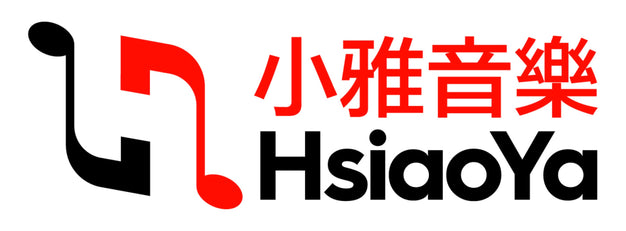
Nocturne for violin and orchestra completed and orchestrated after the sketches of Debussy by Robert Orledge 夜曲小提琴管弦乐团 管弦乐团 小提琴加钢琴 朔特版
比利时小提琴家尤金-伊萨耶(Eugène Ysaÿe,1858-1931 年)精湛的技艺与诗意的融合令人印象深刻,他是年轻的德彪西音乐的忠实崇拜者,1893 年 12 月,德彪西唯一的弦乐四重奏在巴黎首演。1892 年 9 月,在安德烈-波尼亚托夫斯基王子的资助下,德彪西计划进行一次美国巡演,其中包括他即将完成的三首《摇篮曲》(Scènes au crépuscule),灵感来自他的朋友亨利-德-雷格尼耶(Henri de Régnier)的象征主义诗歌。1893 年,他对这三首曲子进行了大量修改,但流传下来的似乎只有法国国家图书馆 MS 20632(2)中的一系列草图,其中大部分似乎是为小提琴和管弦乐队创作的 E 大调或 B 大调作品。我们还从欧内斯特-肖松(Ernest Chausson)1893 年 4 月的信中得知,德彪西正在为伊萨耶斯 1894-95 年的首次美国巡演创作一部作品,这部作品曾一度被描述为协奏曲。1894 年,当德彪西为《牧神午后》做最后润色时,他告诉伊萨耶,他正在为小提琴独奏和管弦乐队创作三首夜曲,这三首夜曲是为您准备的,无疑源自他之前创作的《暮色》场景。第一首仅为弦乐而作;第二首为三支长笛、四支圆号、三支小号和两把竖琴而作;第三首将所有这些乐器结合在一起。他还告诉伊萨耶,也许是考虑到惠斯特勒斯的《夜曲》,这些乐曲要像绘画中的灰色研究。德彪西直到 1896 年 11 月才放弃这一计划,因为伊萨耶告诉他,由于经济原因,他无法在布鲁塞尔首演《夜曲》。我完成的作品最接近德彪西计划中的第三首《夜曲》,也是一首带有相关情节的回旋曲。2006 年出现的动态构思由德彪西谱写,自然而然地引出 B 大调黄昏主题,由大提琴和低音提琴独奏开始,一开始听到的高亢、萦绕的三音构思在小提琴独奏中浮现,与德彪西的构思如出一辙。德彪西的五个主题都是和声,长度在三小节到十三小节之间:它们都与 1897-99 年的管弦乐夜曲无关。整部作品没有发展任何一个主题,而是以《牧神午后》(LAprès-midi dun faune)的现代方式,在不断变化的和声背景中呈现出来
作曲家: Debussy, Claude / Orledge, Robert
校订者: Orledge, Robert
乐器: violin and orchestra
出版社: Schott Music
原文简介:
The Belgian violinist, Eugène Ysaÿe (1858-1931), with his impressive blend of virtuosity and poetry, was a great admirer of the young Debussys music who led the Paris première of his only string quartet in December 1893. In September 1892, Debussy was planning an American tour with the financial support of Prince André Poniatowski that was to include his nearly completed three Scènes au crépuscule, inspired by the Symbolist poetry of his friend Henri de Régnier. He made extensive revisions to them in 1893, even if all that seems to have survived is a series of sketches in Bibliothèque Nationale de France, MS 20632(2), most of which appear to be for violin and orchestra in E or B major. Another related, and more virtuosic, theme emerged in a Parisian sale in June 2006, which opens the main part of the present Nocturne (after a slow introduction).We also learn from Ernest Chausson in April 1893 that Debussy was composing a work for Ysaÿes first American tour in 1894-95, which at one stage was described as a concerto. Then, as Debussy was putting the finishing touches to LAprès-midi dun faune in 1894, he told Ysaÿe he was now working on three Nocturnes for solo violin and orchestra which are destined for you, and which undoubtedly derived from his earlier Twilight scenes. The first was to be for strings only; the second for three flutes, four horns, three trumpets and two harps; the third combines all these instruments. He also informed Ysaÿe, perhaps with Whistlers Nocturnes in mind, that they were to be like a study in grey in painting. Debussy only abandoned this project in November 1896 after Ysaÿe told him he would not be able to première the Nocturnes in Brussels for financial reasons.My completion comes closest to the third Nocturne Debussy planned and to being a rondo with related episodes. The dynamic idea that emerged in 2006, which was scored by Debussy, leads naturally into the twilight theme in B major beginning on solo cello and doublebasses, with the high, haunting three-note idea first heard at the outset floating above on solo violin, exactly as Debussy conceived it. All five of Debussys themes are harmonized and they vary in length between three and thirteen bars: none of them relate to the orchestral Nocturnes of 1897-99. Rather than develop any of these themes, they are presented in changing harmonic backgrounds in the contemporary manner of LAprès-midi dun faune, and the whole work centres on an expansive scalar which joins the various aspects of Debussys twilight themes together in a new perspective.








